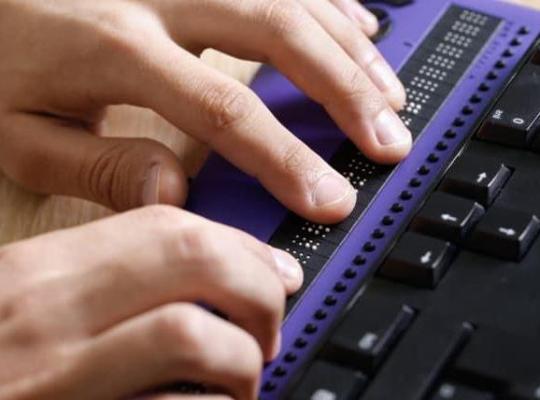Here at JAN, many of our assistive technology (AT) related vision calls continue to revolve around computer access. One of our most commonly requested resources is external computer screen magnification. People are usually interested in this option due to its relatively low cost. A similar type of first-line equipment for vision related accommodations is a larger monitor. People who try to combine these approaches are often particularly disappointed as external computer screen magnification is only typically available in sizes up to 24 inches. While this approach can work well for people with milder forms of a vision impairment, or who are in the early stages of a progressive condition, external magnifiers and larger monitors are rarely sufficient to provide an effective accommodation in the long term. For this reason, JAN’s sensory team routinely provides additional resources on screen magnification whenever a consumer requests information on external computer screen magnification and/or larger monitors. Depending on the nature and degree of an individual’s vision impairment, a combination of optimized hardware, an up-to-date operating system with accessibility features enabled, and assistive software may be needed to achieve an effective accommodation. Training on the use of these accommodations may also be needed both for the employee requesting the modifications and for the IT professionals providing support.
Information on the accessibility features of computer operating systems is readily available online for Windows and Mac users. Features that are often helpful include text-to-speech options that let the user listen to information displayed on the screen and high-contrast display options. Built-in magnifiers are available, but according to feedback from JAN’s callers, they can be frustrating to some users and do not always magnify the screen enough to be useful.
While built-in features may provide enough support for some employees with vision impairments, additional software or hardware may be needed to fully meet an employee’s needs. For example, those who are not touch typists may work more efficiently if their workstation is equipped with a large print or high-contrast keyboard that is easier to see. Both large print and braille stickers are also available and can be used to modify existing keyboards. These are just two types of modified office supplies for employees with low vision.
Another typical approach is the use of screen magnification software that provides levels of magnification and customization of information displayed on computer screens that cannot be readily achieved with external magnifiers or built-in accessibility features. Some of the best-known products in this category are from the ZoomText family of products. In some cases, it may also make sense to explore screen magnification software with some screen reading features or standalone screen reading software in order to provide auditory and braille support. ZoomText Magnifier/Reader is an example of a product that combines some features of screen reading software with screen magnification software. A newer product that combines the enlarging and enhancing features of ZoomText with the full-featured screen reader JAWS is called ZoomText Fusion. Examples of screen readers include JAWS and NVDA.
When choosing an accommodation, be sure to take the employee’s experience and knowledge of their own accommodation needs into account. Many employees are well informed about AT and can tell you what has worked well for them in the past. If an employee is unsure of what might work for them or wants to learn of newer options, an individualized assessment may help. Employees with vision impairments are sometimes able to get services of this kind via medical referral or through a state service such as vocational rehabilitation (VR). Doctors, optometrists, and vision rehabilitation therapists may also be able to make recommendations and referrals for assessment and training on the use of AT. The State AT Project in your area may also demo some products. In some states, they may also be able to perform assessments. You can also refer employees to JAN for a free and confidential consultation about their particular situation.
For additional resources:










